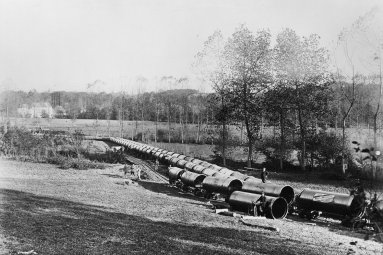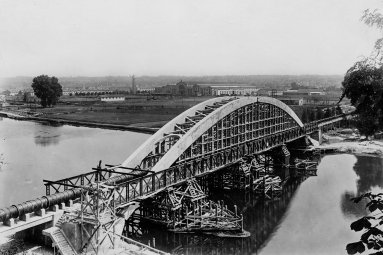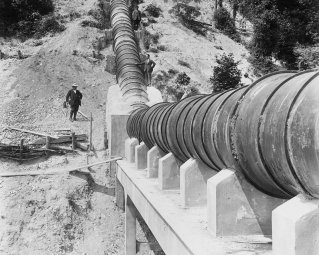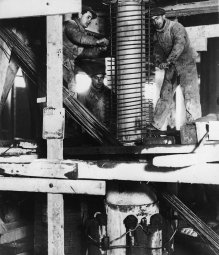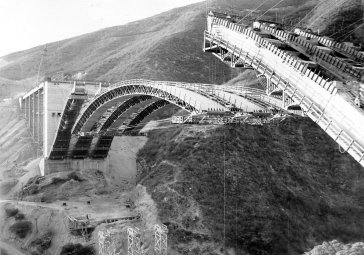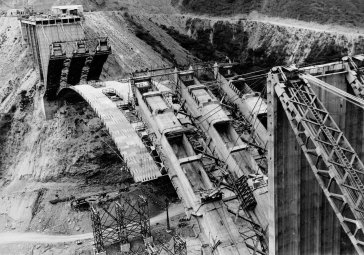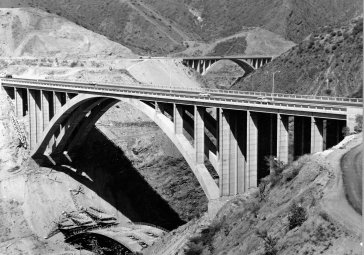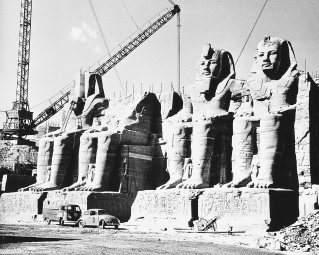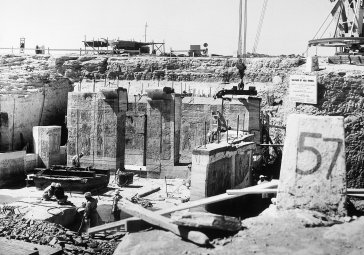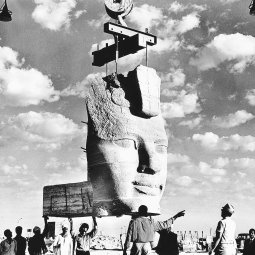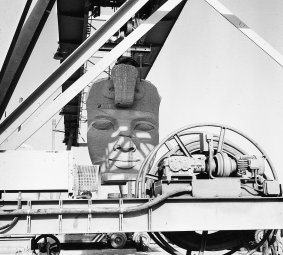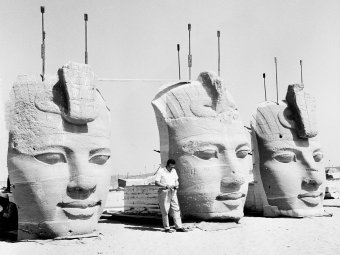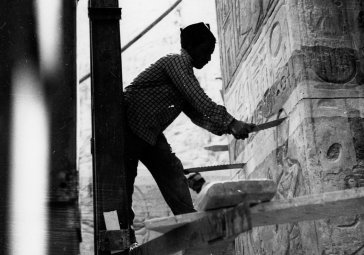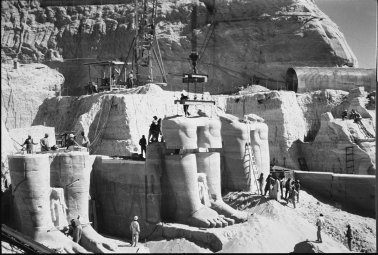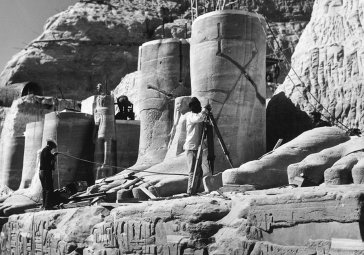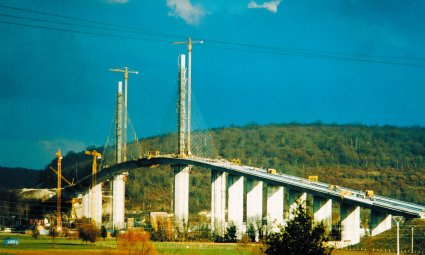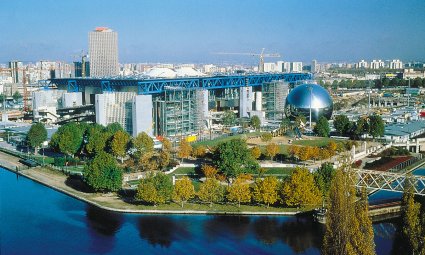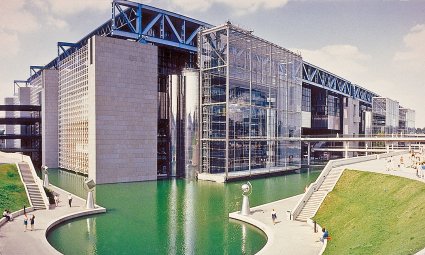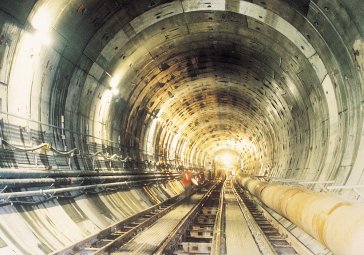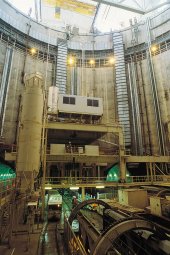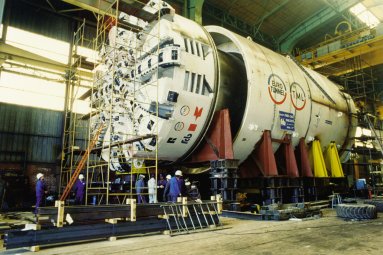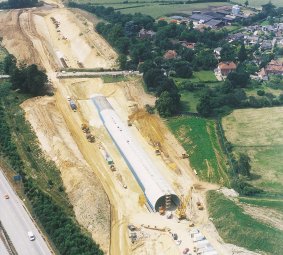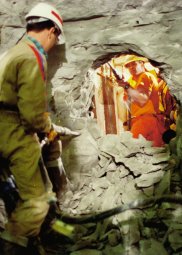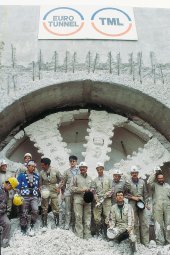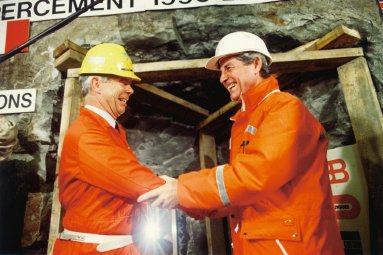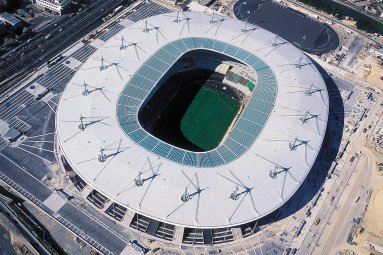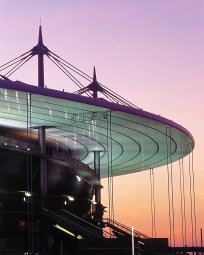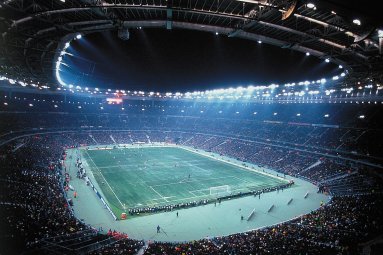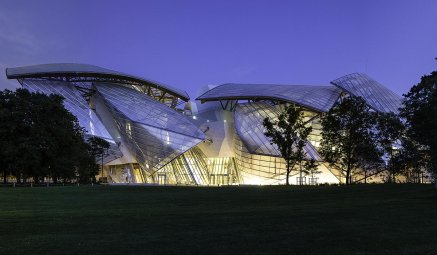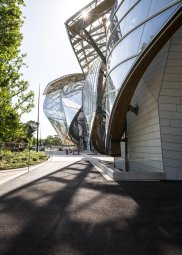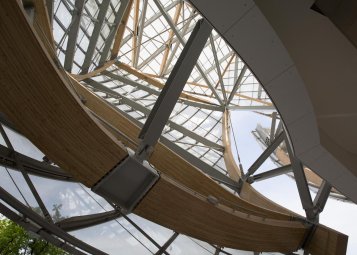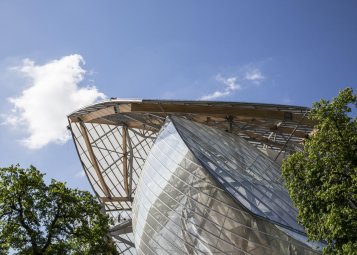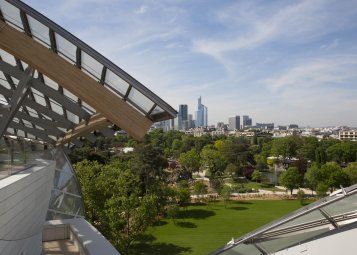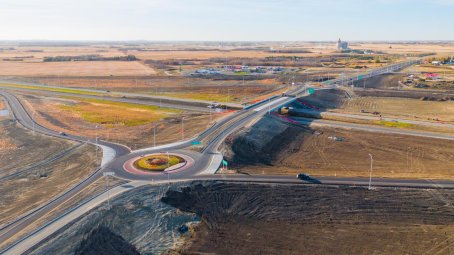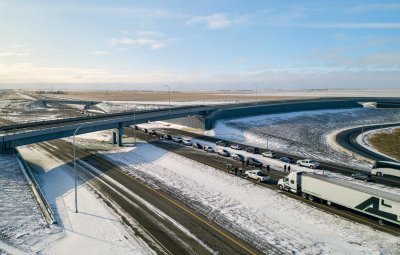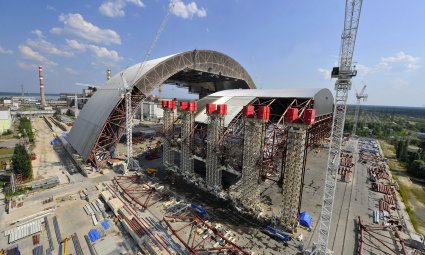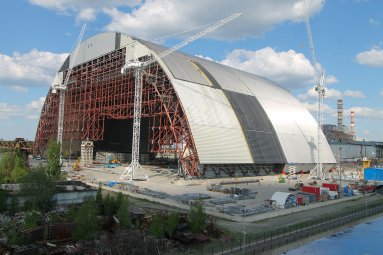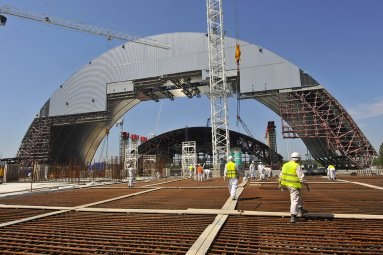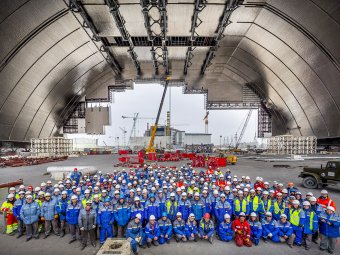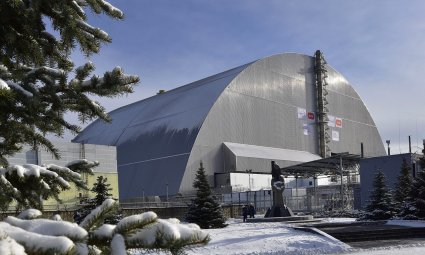Our history
How did VINCI become a player on the world stage in concessions, energy and construction, with a presence in more than 100 countries? The VINCI Group spawned from a constellation of companies whose business lines of yesterday still remain with us today. VINCI’s history dates back to the 19th Century. More than a century of achievements contributing towards a shared ambition: to be useful to people and to take care of the planet.
How VINCI became VINCI
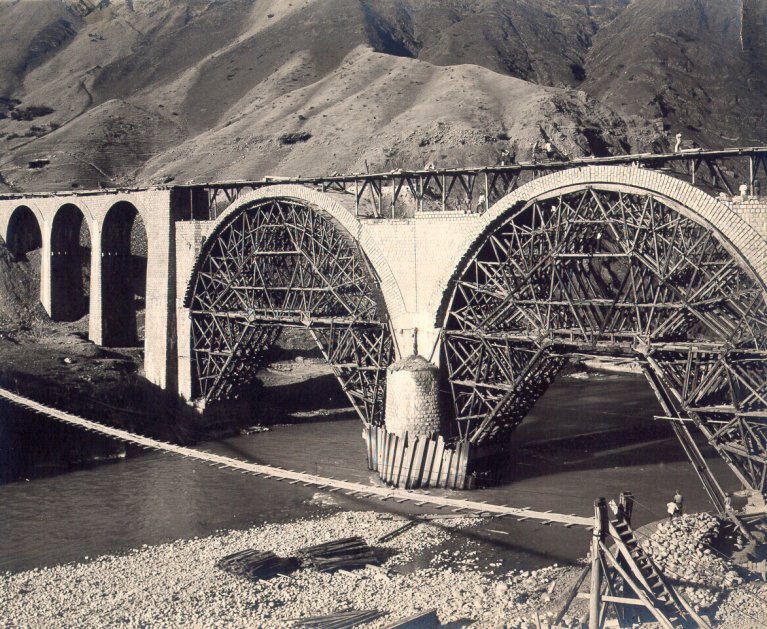
1899
Creation of the Group
1899
Creation of the Girolou company (electricity power plants and networks, concessions)
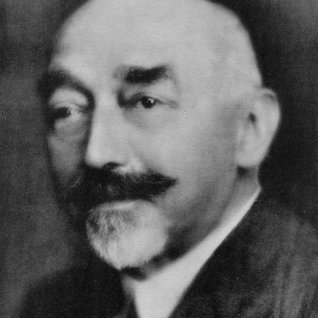
Alexandre Giros (Founder and Chairman 1932-1937)
Born in 1870 and educated at the École Polytechnique, Alexandre Giros formed a partnership in 1899 with one of his sales colleagues Louis Loucheur to found SGE. He was involved in the promotion of reinforced concrete, becoming one of the founders of the French Union of Reinforced Cement Constructors in 1903. He also remains one of the great figures of the electricity sector in the 20th Century, having held positions in no fewer than thirteen companies in the sector.
There, as at the SGE, he sought to implement a bold social policy, without, however, allowing the role he played to become a political one. Promoted to Commander of the Legion of Honour in 1934, he held on very strongly to the values of work and family duty. Through his daughters, the Giros family would preside over SGE for a long time to come: Denise and Madeleine married Jean Matheron and Paul Huvelin respectively, two future directors of SGE. Alexandre Giros died in 1937.
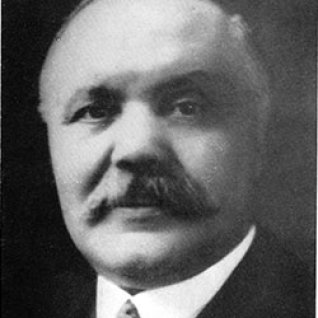
Louis Loucheur (Founder)
Born in 1872 into a Protestant family living in Roubaix, and classmate to Alexandre Giros at the École Polytechnique, Louis Loucheur was involved heavily in politics in addition to his professional life. Noted for his organisational talents as well as his knowledge of the arms sector, he was promoted in 1916 to French Under-Secretary of State for Artillery and Munitions, an essential post in wartime. In 1917, he even took on the role of Minister of Armament, prioritising intensive production in the fulfilment of his role.
At the armistice, he held the post of Minister of Industrial Reconstruction, then that of Minister of Liberated Regions; he also played an important role in the settlement of German reparations. This litigation led to his resignation in 1922. In 1928, he succeeded in getting the so-called Loucheur law passed, which made provision for the construction of 200,000 low-cost homes over a five-year period. The foundations for increasing state interventionism in this sector had now been laid. He devoted the final years of his life to supporting the European concept, in vain. He died in 1931.
1905
The first concession at Roubaix and Tourcoing
General Tricon-Dunois (1896-1996)
Son of the founder of the Grands Travaux en Béton Armé reinforced concrete works company, General Tricon-Dunois had the unique feature of having been both an army general and a business leader. Having left in 1940 to join General de Gaulle in London, he joined the Free French Forces. Seconded to General Leclerc, he actively participated in the rallying of the African Empire, before taking part in the Italian operations, the liberation of Marseille and Strasbourg. His activity was interrupted in Germany, after the fall of the Reich.
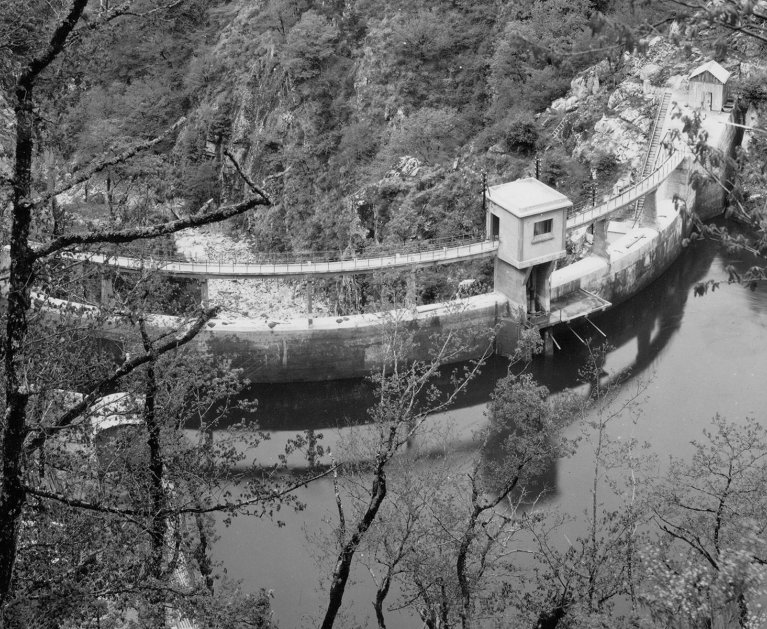
1908 – 1946
Electrification (energy concessions)
1908
Foundation and rise of SGE (Société Générale d’Entreprises)
In just a few years, Girolou had adopted the position of one of the major installers of electrical power plants and networks. SGE grew at a very rapid rate, becoming from 1910 the second largest public works company in France, after GTM (Grands Travaux de Marseille).
During the First World War, the company contributed to the nation’s war effort. Subsequently, despite the at times delicate environment, it continued to develop, taking part in major projects as an extension of those at the Truyère or the development of the Drac river. The Second World War impacted the company once more, forcing it to abandon its territorial positions.
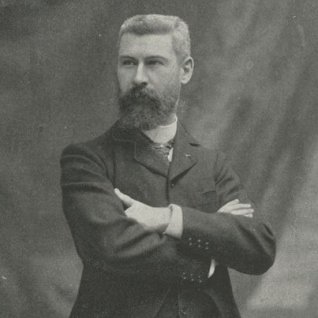
Amédée Alby (Chairman from 1908 to 1932)
Graduated from the École Polytechnique, he became an engineer for the Corps of Bridges and Roads in 1885. In 1906, he was appointed consulting engineer for the Westinghouse company. He notably contributed to the design of the Pont Mirabeau, completed in 1896 in Paris. He also collaborated on the construction of the Pont Alexandre-III and the Passerelle Debilly.
He was president of the Société Générale d'Entreprises (SGE) from 1908 to 1932, then honorary president until 1942. He also joined the board of directors of the Midi Railway Company. In 1921, he was promoted Officer of the Legion of Honor.
1908
Lighting of the Paris Motor Show
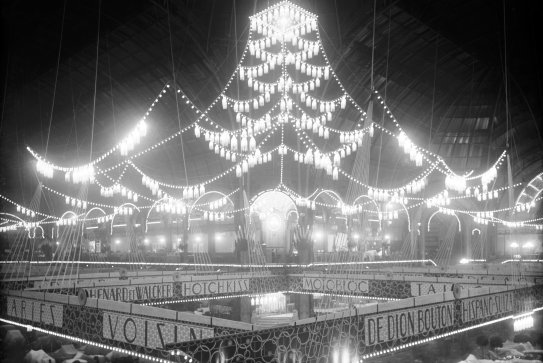
1909
Rural electrification
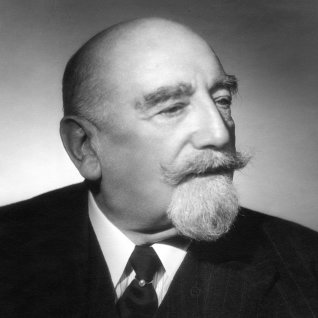
Edmé Campenon (1872-1962)
Coming from a family of old nobility and destined to join the École Polytechnique, he chose to enlist as a simple soldier and then travel the world. In 1910, he entered the world of public works and founded the Campenon Bernard company ten years later with André Bernard, a young engineer from Arts et Métiers.
The success of this association can be explained by the quality of Campenon Bernard's collaborators, the talent of Eugène Freyssinet, as well as the wealth of relationships maintained by Edmé Campenon. He remained CEO of the Campenon Bernard company until 1958.
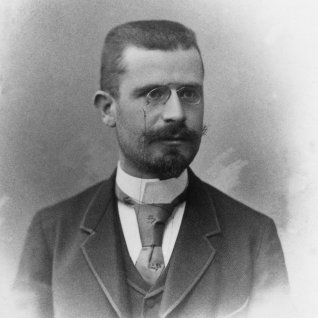
Charles Rebuffel (1861-1942)
Descendant of a family of Marseille merchants, Charles Rebuffel joined the GTM as a polytechnician and engineer at Ponts et Chaussées. here, he successfully carried out the sanitation works planned for the Phocaean city. The success of this project allowed him to quickly become a key figure of GTM and to assume its presidency, continuously, between 1917 and 1940.
Highly influential in the electricity sector, he sat on many boards of directors and chaired five companies in the sector. Nevertheless, GTM remained his primary concern: thanks to the support of his managers, he structured the group into a powerful network of subsidiaries and shareholdings.
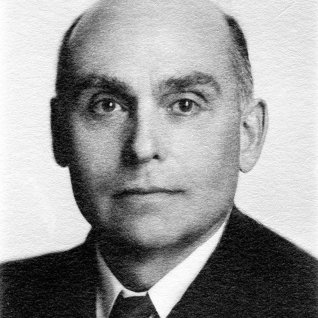
André Garczynski (1888-1944)
Born into a Polish family that had settled in Sarthe since the Napoleonic Wars, André Garczynski studied at the Institut d’électricité de Grenoble before joining forces with Gaston Traploir in 1919. Passionate about the automotive industry, he showed a great interest in social issues and actively participated in the creation of the Social Insurance Funds, the forerunner of social security.
Having remained in Le Mans in 1940 to protect his company, he was arrested by the Gestapo in 1943 and then deported to the Buchenwald camp where he died a year later.
1923
Water treatment project at Voulzie
Lionel Ignace (1900-1997)
Alongside Georges Courtois, Lionel Ignace was involved in the creation of the Société Française du Vialit in 1924. In 1955, he became its director. But Lionel Ignace is also a major figure in the roads sector due to his union activity: co-founder of the Union of Road Industry Unions of France, he became President of the French Road Works Contractors' Union in 1953, before being appointed honorary Vice-President of the National Federation of Public Works.
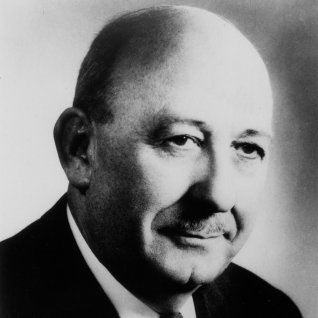
Albert Cochery (1898-1981)
Born in the North and orphaned at a very young age, he set himself apart during the First World War, providing valuable information to the General Staff. In 1926, he founded a company that bore his name and that exploited by-products of the steel industry: blast-furnace slag was used as the basis for tarmacadam. A simple but brilliant idea that ensured the development of the company and made Albert Cochery a representative and icon of the profession.
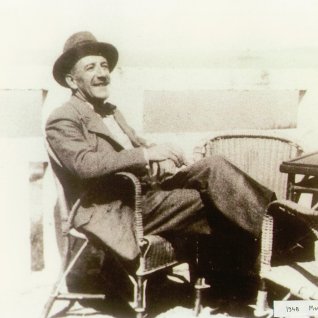
Sylvain Bourdin (1884-1950)
Originally from Angers, Sylvain Bourdin studied law before taking over a steamroller company based in Angers. A shrewd manager, he had little interest in technology; on the other hand, his skill and his close relationships with many engineers from the Ponts et Chaussées were enough for him to establish his company's reputation. In 1928, he joined forces with Louis Chaussé, who was more technical and pragmatic than he: their collaboration gave birth to Bourdin et Chaussé, a roadwork company that gradually rose through the ranks to become one of the largest in France.
Louis Chaussé (1897-1980)
Son of a worker in the slate mines of Anjou, he was hired after the First World War by the Gaétan Brun roadworks company. Then, in 1928, he joined forces with Sylvain Bourdin. When the latter died, Louis Chaussé became the sole manager of the roadworks company that they had created together: Bourdin Chaussé. Close to his staff and frequently visiting the construction sites, he succeeded in establishing his company as one of the leading in France.
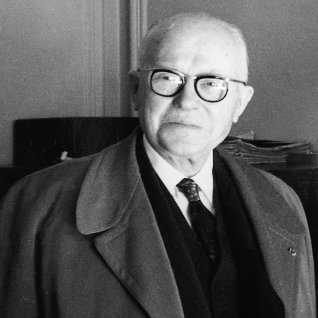
Eugène Freyssinet (1879-1962)
Born in Corrèze, Eugène Freyssinet studied in Paris, at the Lycée Chaptal, then at the Polytechnique and École des Ponts et Chaussées. After spending nearly ten years in administration, he played an active role in the development of Entreprises Limousin, of which he became one of the partners. Freyssinet embodied his technical prowess there, thanks to a pronounced innovative flair.
In 1929, he split from Entreprises Limousin: this company did not plan to develop the pre-stressing process, for which he had filed a patent a year earlier. It was not until the support from Edmé Campenon and the creation of the Société Technique pour l’Utilisation de la Précontrainte (Technical Company for the Use of Pre-stressing - STUP) that this invention was exploited and Eugène Freyssinet's talent could truly be embodied.
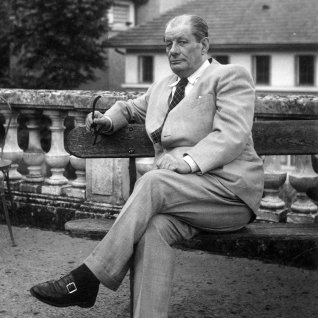
Gaston Traploir (1889-1968)
Son of a railway inspector, himself an engineer trained in the applications of reinforced concrete and electricity, Gaston Traploir found in André Garczynski an ideal partner. During a trip to the United States in the 1930s, he discovered the virtues of Taylorism, which he decided to apply to his business. A talented inventor and shrewd manager, he strove to establish a modern organisation within the company, which he chaired until the mid-1960s.
1932
Development of a section of the Rhine
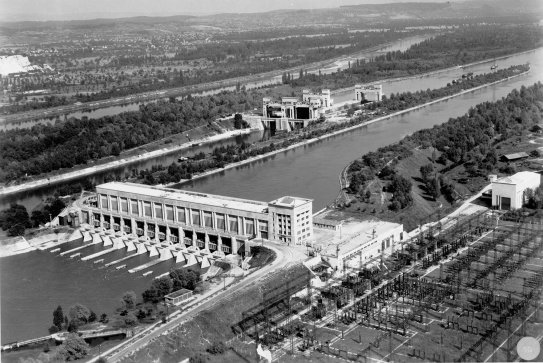
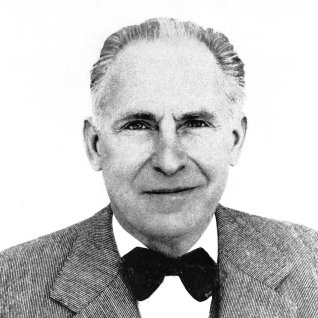
Pierre Chaufour (1901-1970)
A graduate of the École Centrale, he married Alexandre Dumez's only daughter and was shortly afterwards hired by his father-in-law as a works engineer. When his father-in-law died, he took over the reins of the company and proved to be a great leader of his staff.
Stranded in Algeria in 1942, he took part in the Free French fight and became honorary president of his division's veterans after the Liberation. When he died in 1970, his brother André succeeded him in heading up Dumez.
1934
Salvage of the maritime terminal at Le Havre
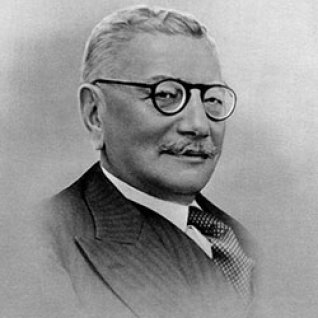
Ernest Weyl (Chairman March 1937 - July 1937)
A polytechnician of Alsatian origin, Ernest Weyl started out at the State manufacturing factories before joining the Régie Générale des Tabacs (General Tobacco Company) of the Ottoman Empire. Having come to the attention of Loucheur, he became one of his main collaborators at the Ministry of Armament.
In 1922, he was promoted to Managing Director of SGE. After the death of Alexandre Giros in March 1937, Ernest Weyl took over the presidency of SGE, surviving Giros by only a short time until his death on 1 July of the same year.
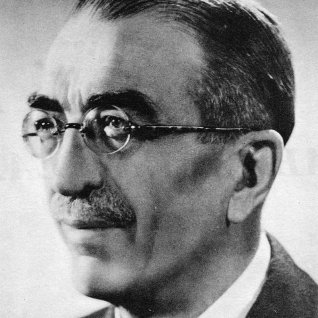
Henry Laborde Milaa (Chairman 1937-1947)
Born in 1886, he entered the Polytechnique in the Corps des Ponts (Corps of Bridge Engineers). Conscripted as an engineer, he fought at Verdun where he was seriously injured. He joined SGE in August 1919 as Director of Works and was noticed by Alexandre Giros who called upon him in 1925 to take on the position of General Manager. He played a determining role in the company’s recovery.
Becoming Managing Director in 1933, he showed a particular interest in electricity and established himself as Alexandre Giros' successor. The presidency of the SGE was entrusted to him on September 29 1937 and he had to face the challenges of the war period with prudence and perspicacity. He handed over his role to Jean Matheron in 1947.
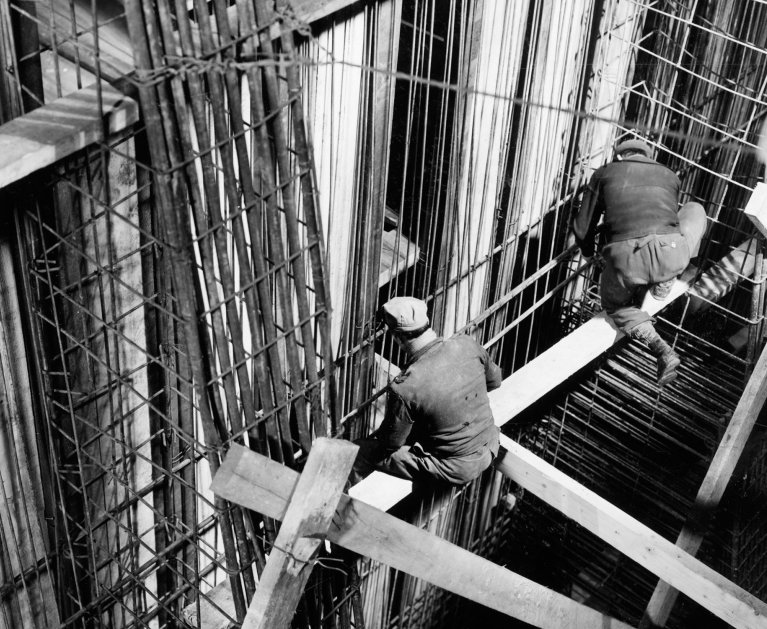
1946 – 1966
The construction era
1946
Civil engineering leader
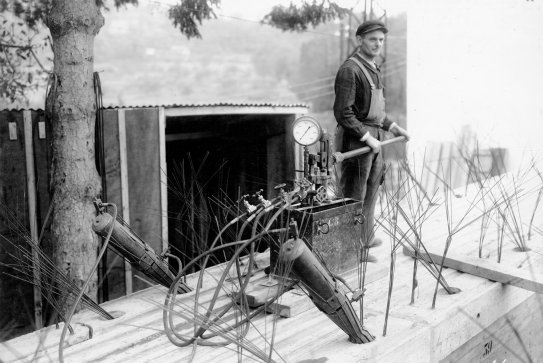
1947
Reconstruction of the Port of Dunkirk
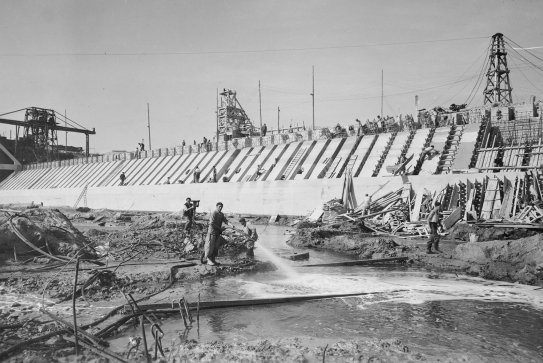
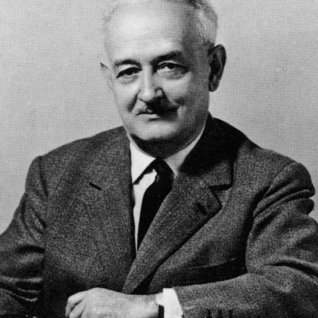
Jean Matheron (Chairman 1947-1971)
A graduate of the École Polytechnique and the École Nationale des Ponts et Chaussées, Jean Matheron married the eldest daughter of Alexandre Giros (co-founder of SGE), and joined the board of directors in 1931. After the Second World War, he succeeded Henri Laborde-Milaa as Chairman of SGE. Attached to this position for almost a quarter of a century, he strove to promote the reputation of the company, while maintaining the family spirit that he embodied. His policy was guided by great financial prudence, as demonstrated by his determination to record on the balance sheet only works that had been carried out.
1952
Construction of the viaducts of Caracas
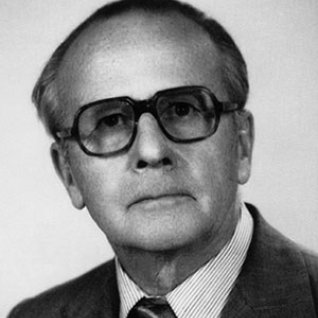
René Gonon (1906-2001)
Born in 1906, René Gonon attended the Lycée Ampère in Lyon, then the École Polytechnique and École des Ponts et Chaussées. He began his professional career at SNCF, where he was responsible for the Northern region. It was not until 1951 that he joined the GTM (Grands Travaux de Marseille) and six years later, in 1957, he became its Chairman.
He held this position until 1972, but his influence extended well beyond that date. With true innovative talents, his actions were governed by three principles: team spirit, trust and frankness.
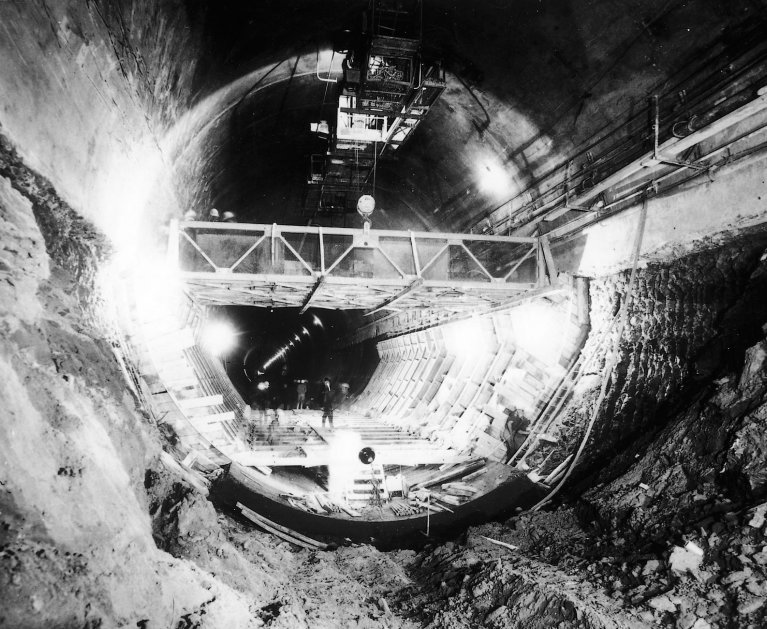
1966 - 1988
Absorption by CGE
1966
Inauguration of the Oléron viaduct
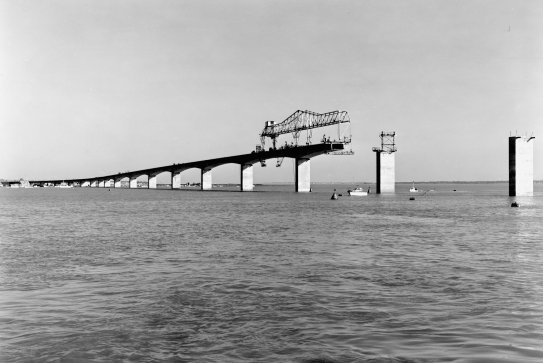
1966
The Compagnie Générale d’Electricité took over control of SGE.
1968
Salvage of the Abou Simbel temple
1969
Construction of the Paris-Le Mans and Paris-Poitiers motorways
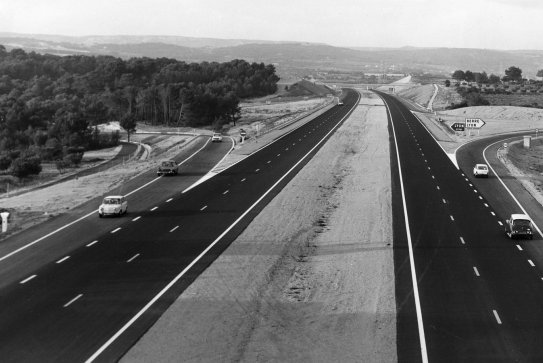
The 1970s
The rise of nuclear power
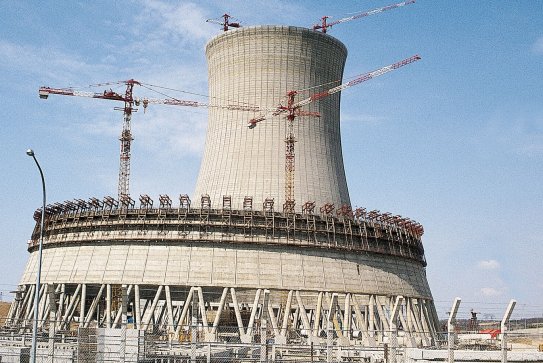
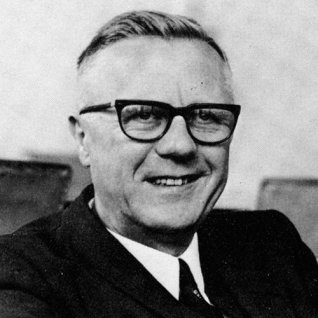
Roger Schulz (Chairman from 1971 to 1974)
Born on November 21 1919 in Paris, a graduate of the École Centrale, he joined the general management of the Aciéries de Longwy in 1943 as an engineer, where he remained until 1950, when he was recruited as a director at the Banque de Paris et des Pays-Bas. He became Deputy Managing Director in 1967 and remained so until 1969.
He held the positions of Chairman and Chief Executive Officer of Compagnie des Machines Bull (1964-1966), Chairman and then Board Member of Omnium de participations financiers et industrielles (OPFI), Chairman and Chief Executive Officer of Compagnie Générale des Lampes (1969-1972), Board Member and then Deputy Vice-Chairman of Compagnie Thomson-CSF (1969-1972), Board Member and then Director General of French company Thomson-Houston-Hotchkiss-Brandt, Vice-Chairman and Chief Executive Officer (1972-1973), then Vice-Chairman of Alsthom-Atlantique, Board Member of SGE, CGEE-Alsthom, Électrobanque, Câbles de Lyon. He handed over his seat to Pierre-Donatien Cot on 31 December 1974.
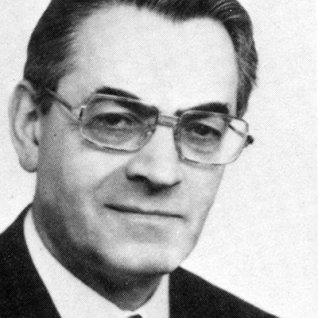
Pierre-Donatien Cot (Chairman from 1975 to 1980)
Born in Paris on September 10 1911, he entered the Polytechnique and then the École Nationale des Ponts et Chaussées. He embarked upon his career as an engineer for the Ponts et Chaussées in Paris (1936), became chief engineer of the Autonomous Port of Le Havre (1945), technical director (1951) and then general director of Aéroports de Paris (1955-1967).
In 1963, he was appointed General Engineer at the Ponts et Chaussées school. General Director of the national airline Air France (1967-1974), President of the National Geographic Institute (1967-1975). He was appointed Head of SGE in 1975 and joined the board of directors of CEEE-Alsthom in 1977. On January 1, 1980, he handed over his position to Paul Naudo.
1976
Completion of the Montreal Olympic Games complex
Freyssinet actively participated in the construction of the Montreal Olympic Games complex in Canada, which hosted the 1976 Games. The group notably built the velodrome, for which a special system was developed to decentre the roof using jacking on the 4 abutments. Construction of the Beaubourg Centre in Paris
Designed by Renzo Piano and Richard Rogers, and built by GTM, the Georges-Pompidou Centre is one of the most striking Parisian buildings of the second half of the 20th Century, even if gaining acceptance of the integration of this "ship of culture" into the district was a challenge.
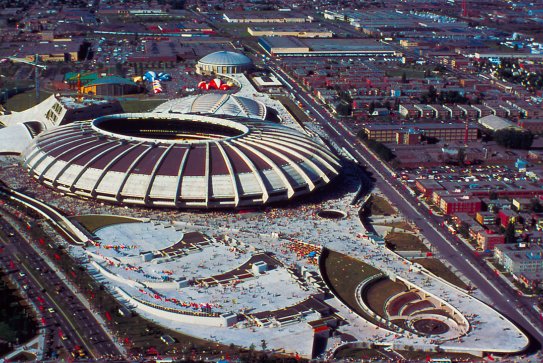
1977
Construction of the Brotonne bridge
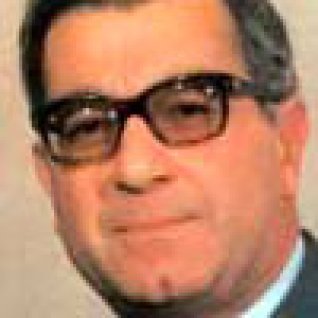
Paul Naudo (Chairman from 1980 to 1984)
Paul Naudo was born in 1926 in Prades (Pyrénées-Orientales department of France). He graduated from the École Centrale. In 1956, he joined forces with one of his former classmates, Roger Devars du Mayne, to found the company Devars-Naudo, specialising in public works and factory construction. n 1970, they took over Établissements Sainrapt et Brice, of which Paul Naudo became the Chairman and Chief Executive Officer and Roger Devars du Mayne the Vice-President. Paul Naudo became Chairman (1968) of Indumat Great Britain Ltd., based in London, then of Sabrice Corporation in New York (1972) and of Sabrice Limitée in Montreal (1973).
A Chairman of many companies, in the 1970s he joined the board of directors of the FNTP and the Syndicat professionnel des entrepreneurs de travaux publics de France, where he served as board secretary. Vice-president of the Syndicat des entreprises françaises de travaux publics à vocation internationale (Sefi), he became President of SGE in 1980 until 1984, (SGE became SGE-SB in 1981).
1984
The Saint-Gobain company became the majority shareholder of SGE
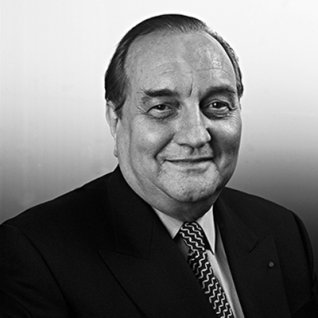
Serge Michel (Chairman from 1984 to 1990)
Serge Michel has spent his entire professional life in the world of construction and public works. n 1951, he joined SEAS as a director, then in 1955 became director of Établissements Houdry. In 1967, he joined the Saint-Gobain group as sales director of Socea and then became its chairman.
He then successively held the positions of Deputy General Manager and Director of the service companies division at Compagnie de Saint-Gobain. He then joined SGE as Chairman from 1984 to 1988 and then Chairman of the Management Board from 1988 to 1990. Deputy General Manager of Compagnie Générale des Eaux from 1991 to 1992, he became Chairman of Soficot.
1985
Construction of Parc de la Villette in Paris
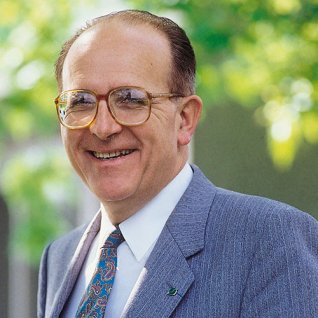
Pierre Léon-Dufour (1937-2001)
Pierre Léon-Dufour was born in 1937 in Tarbes, in the Hautes-Pyrénées. A graduate of the École Nationale des Ponts et Chaussées, he was already working for the GTM group when it embarked on its parking facility adventure. Pierre Léon-Dufour played a key role in the development of Les Parcs GTM, which he chaired for ten years between 1986 and 1996. He also became involved in professional unionism by founding Syncoparc (National Union of Public Parking Facility Concession Companies).
1987
Construction of the nuclear facility at Golfech
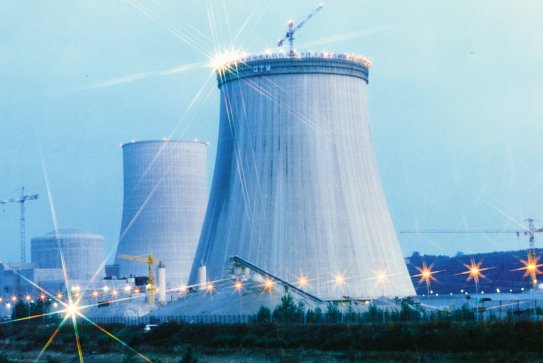
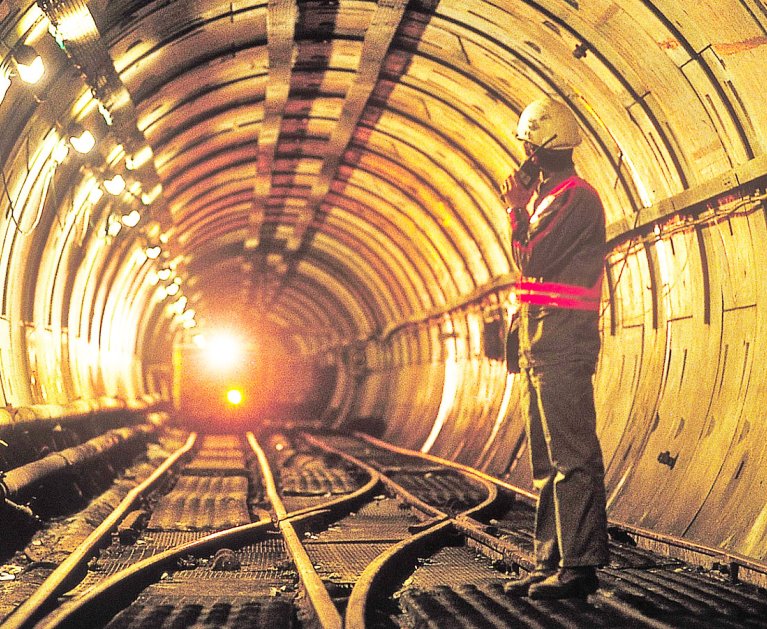
1988 – 2000
Internationalisation
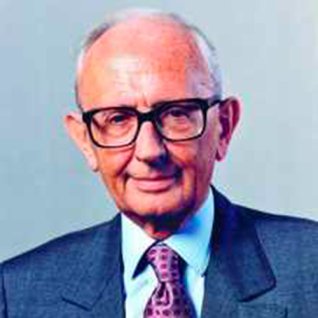
Guy Dejouany (Chairman from 1990 to 1996)
A graduate of the École Polytechnique and a Ponts et Chaussées engineer, Guy Dejouany spent most of his career at the Compagnie Générale des Eaux (now Vivendi), where he was successively Deputy Managing Director in 1965, Managing Director in 1972, Director-Chief Executive Officer in 1973 and Chairman and Chief Executive Officer from 1976 to 1996. He was Chairman and Chief Executive Officer of SGE from 1990 to 1996 (a subsidiary of the Compagnie Générale des Eaux).
1994
Inauguration of the Channel Tunnel
1995
Construction of the Normandie bridge
The Pont de Normandie, constructed by a consortium including Campenon Bernard, Dumez, GTM, Sogea and Freyssinet, was the second longest cable-stayed bridge in the world at that time - with a main span of 856 m. It connects Le Havre to Honfleur by spanning the Seine estuary. With a total length of 1966 m, the bridge comprises two concrete pylons reaching a height of 215 m. Although its span is more modest than that of the large suspension bridges, the Pont de Normandie nevertheless represents considerable progress in the area of cable-stayed bridges. In particular, it can withstand winds in excess of 300 km/h.
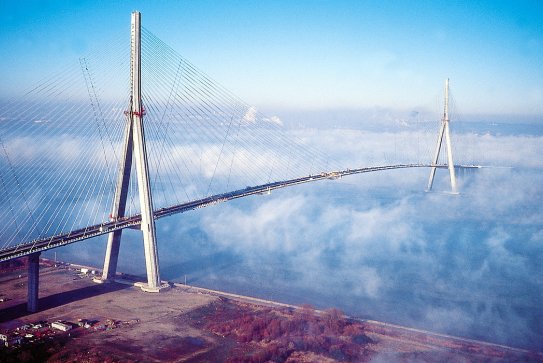
1996
Reorganisation of the SGE
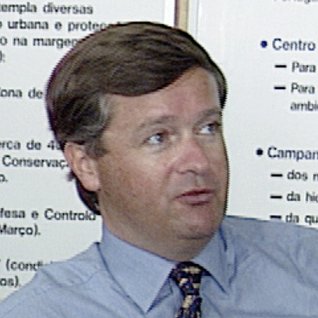
Jean-Marie Messier (Chairman of SGE from 1996 to 1997)
A graduate of the École Polytechnique and the École Nationale d'Administration, Jean-Marie Messier began his career as a financial inspector in 1982. He was successively chief of staff to the minister responsible for privatisation, technical advisor to the Minister of Economy and Finance from 1986 to 1988, and managing partner of the Lazard Frères et Cie bank from 1989 to 1994. Having joined the Groupe Générale des Eaux (which became Vivendi in 1996) as a Director and Chief Executive Officer in 1994, he became its Chairman and Chief Executive Officer until 2002. He was Chairman and Chief Executive Officer of SGE from 1996 to 1997 (a subsidiary of Vivendi).
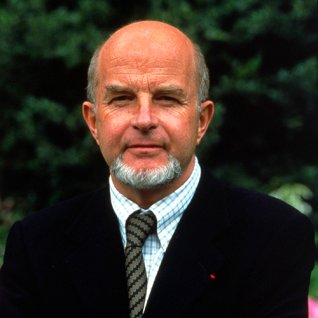
Antoine Zacharias (Chairman of SGE then of VINCI from 1997 to 2006)
A graduate of ENSEEIHT, Antoine Zacharias held various management positions within the Compagnie Générale des Eaux, where he spent most of his career. In particular, he was Regional Director in Lyon and responsible for the development and coordination of the Group's German activities. He was appointed Deputy Chief Executive Officer of the Compagnie Générale des Eaux in 1994 and a member of Vivendi's Executive Committee in 1995. Director and Chief Executive Officer of SGE since 1991, he became its Chairman in June 1997. He resigned from Vivendi in April 2000, when Vivendi reduced its stake in SGE to 17%. He was the driving force behind the merger of VINCI with Groupe GTM, which in 2000 made VINCI the world leader in construction, concessions and associated services.
1998
Jin Mao Tower in China
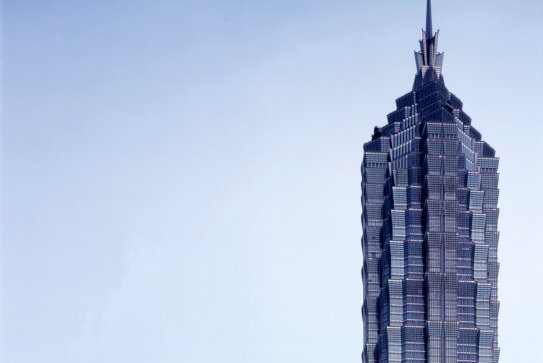
1998
Inauguration of the Stade de France
1998
Opening of the Vasco da Gama Bridge at Lisbon to traffic
Inaugurated in 1998, the Vasco da Gama Bridge is a 17 km-long structure that comprises a main cable-stayed bridge span 824 m in length, four viaducts 488 m, 672 m, 6531 m and 3825 m long, an interchange, a service and toll area. The entire assembly is designed to withstand an earthquake of a magnitude more than four times greater than the one that destroyed the capital in 1755, without suffering any damage. Placed during the works under the management of Campenon Bernard, the structure has been operated under concession by VINCI since its completion.
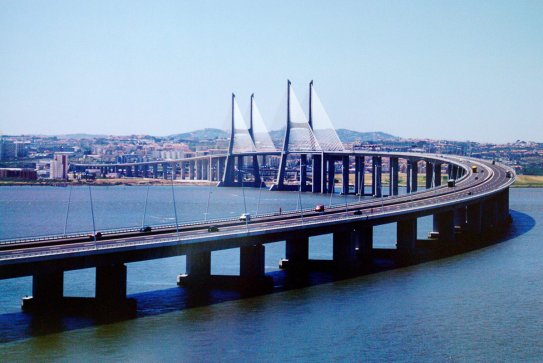
1999
Air conditioning and fire protection of the Reichstag at Berlin
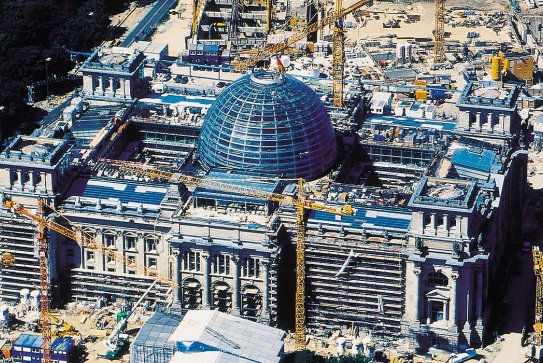
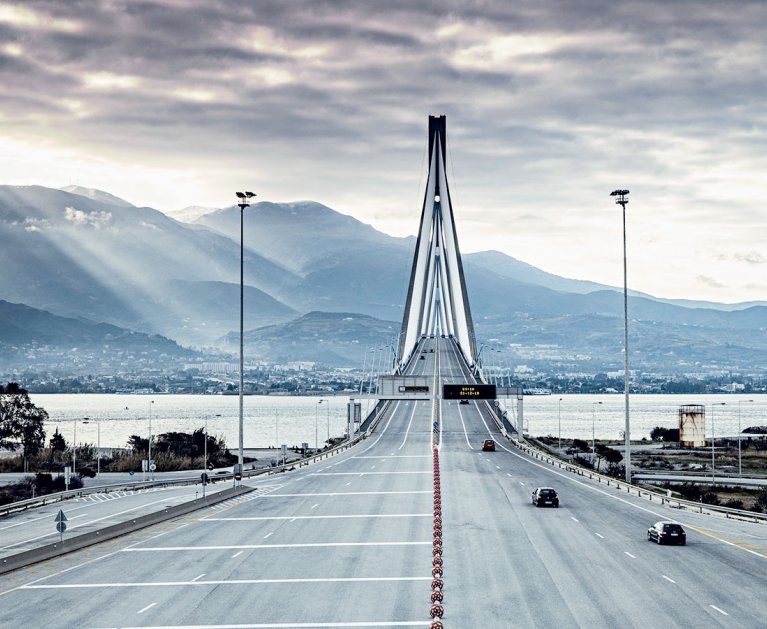
2000 - present
Birth and development of VINCI
2000
Inauguration and independence of VINCI
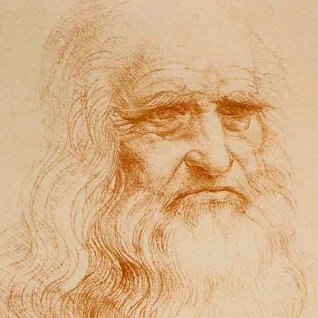
Leonardo da Vinci
A tribute to the multiple genius of this man who was at once an artist, scientist and engineer, the name VINCI places the Group's identity under the banner of humanism, inventiveness and technical challenge. A key figure in universal cultural heritage, Leonardo da Vinci also reflects the Group's European roots.
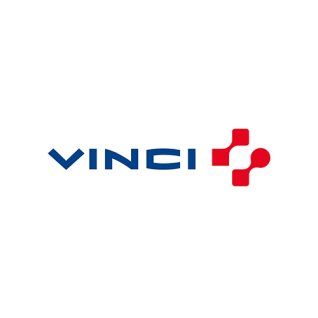
The connectors
The VINCI logo comprises connectors once used in the construction of cathedrals to bind the stones together. For the Group, these are a symbol of durable construction and solidity, also evoking the dynamics of networks, the interconnection of our business lines and know-how.
2001
Creation of the global main stakeholder in the parking sector

2002
VINCI was floated on the CAC 40 index
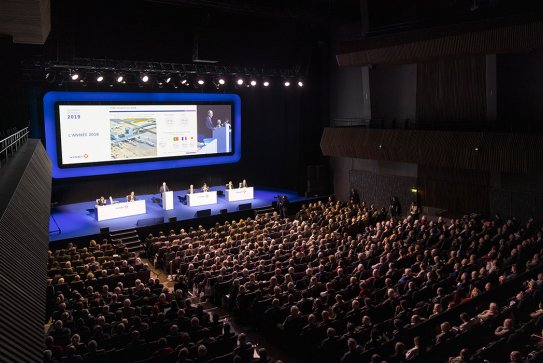
2003
The Hall of Mirrors of the Royal Palace of Versailles restored by VINCI
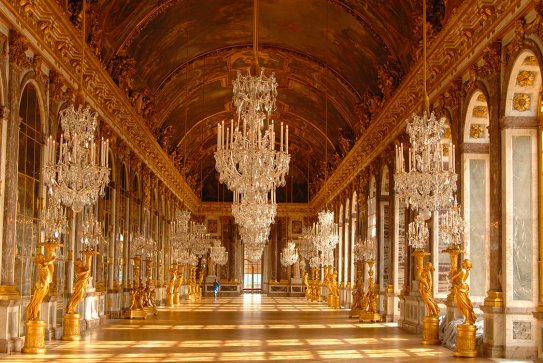
2004
Opening of the Charilaos-Trikoupis (Rion-Antirion) bridge to traffic, linking the Peloponnese to mainland Greece
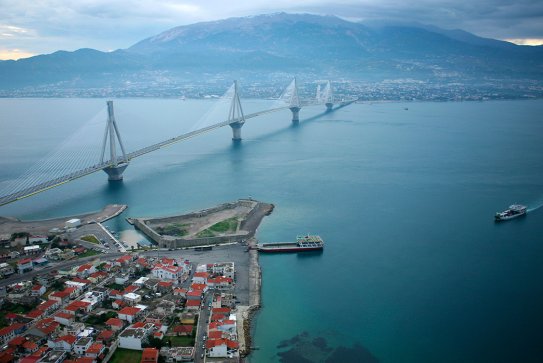
2006
Creation of VINCI Autoroutes
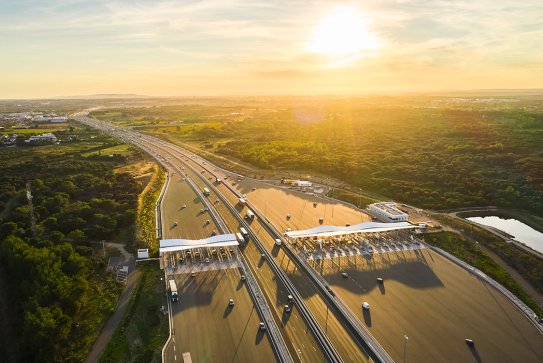
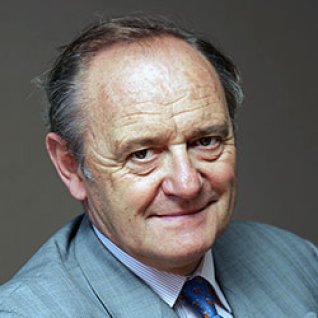
Yves-Thibault de Silguy (Chairman from June 2006 to May 2010)
Yves-Thibault de Silguy holds a law degree from the University of Rennes, a graduate degree in public law from the Institut d’études politiques de Paris, public service section, and the École nationale d’administration. From 1976 to 1988, he held miscellaneous ministerial positions. From 1988 to 1993, he was director of the international affairs department, then director of international affairs for the Usinor Sacilor group. Between 1993 and 1995 he performed various functions in the French Prime Minister’s cabinet. From 1995 to 1999, he was European Commissioner for Economic, Monetary and Financial Affairs. From 2000 to 2005, he was Chairman of the European Policy Committee of Medef.
In January 2000, Yves-Thibault de Silguy became a member of the management board of Suez Lyonnaise des Eaux, and was then appointed Chief Executive Officer of Suez from 2001 to 2003. He then served as general delegate of Suez from 2003 to June 2006. He was appointed Chairman of the Board of Directors of VINCI on June 1 2006 and resigned from his position at Suez. In May 2010, he became Vice-Chairman and Lead Director of the Board of Directors of VINCI. He was Vice-Chairman of the Board of Directors of VINCI from October 2018 to April 2022, he was Vice-President of the Board of Directors of VINCI.
2007
The construction division activity included specialist business lines
2008
Construction of the Grande Ravine viaduct at La Réunion
The Route de Tamarins, a 34 km link road cut into the island's rugged terrain, is a veritable smorgasbord of structures of different types, some of which are unique. Several VINCI Construction companies were involved in this vast project, particularly around the impressive Grande Ravine viaduct.
It is a thin blade that soared above the void in October, without piers or cable-stays, so as not to endanger the Tropical Shearwater, a rare bird that nests at the bottom of this 290 m wide and 170 m deep ravine. To cross it, VINCI Construction designed this innovative structure with reduced arch effect. Part of the loads from the metal deck are transferred to the ground, duly reinforced, and the other part in the pre-stressing cables: tie rods integrated into the deck and anchored in the buried counterweights that extend the enormous abutments embedded in the sides of the walls. In addition to the civil engineering of the bridge, led by Dodin Campenon Bernard, and the pre-stressing, carried out by Freyssinet, the sealing of the roadways was carried out by Eurovia. The structure was opened to traffic in 2009.
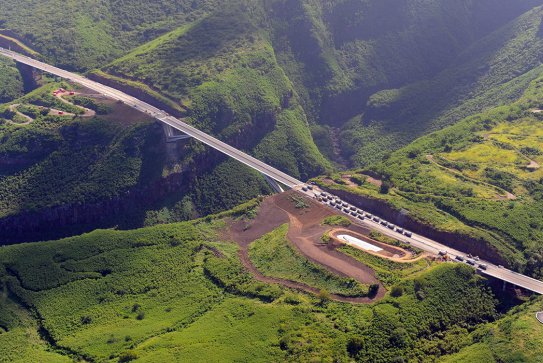
2010
Cegelec became part of VINCI Energies
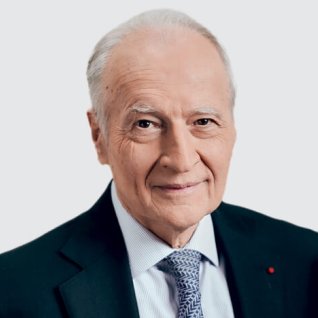
Xavier Huillard (Chairman and Chief Executive Officer since May 2010)
Xavier Huillard is a graduate of the École Polytechnique and the École Nationale des Ponts et Chaussées. He has spent most of his career in the construction business areas in France and abroad. He joined Sogea in December 1996 as Deputy Managing Director in charge of international and specific works, then became Chairman and Chief Executive Officer in 1998. Appointed Deputy Managing Director of VINCI in March 1998, he was Chairman of VINCI Construction from 2000 to 2002.
He was appointed Deputy Managing Director of VINCI and served as Chairman and Chief Executive Officer of VINCI Energies from 2002 to 2004, and was then Chairman of that company from 2004 to 2005. He became Director and Chief Executive Officer of VINCI in 2006 and Chairman and Chief Executive Officer of VINCI on 6 May 2010. He was Chairman of the Institut de l’entreprise from January 2011 to January 2017.
2010
Laying of 450 km of pipelines in Papua New Guinea
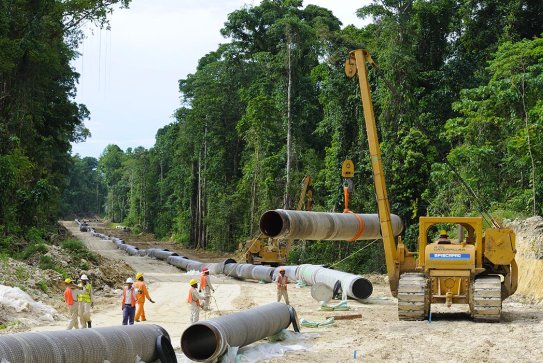
2011
Construction of the SEA Tours-Bordeaux LGV
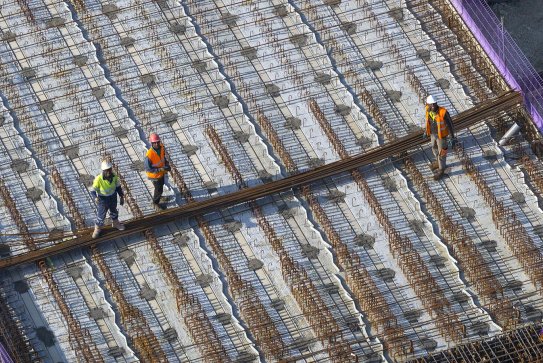
2012
Completion of Cité du Cinéma
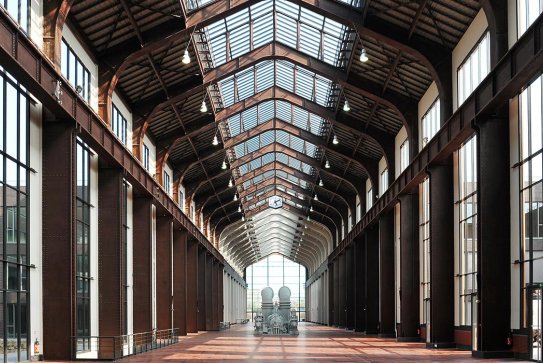
2013
Decisive development in airport concessions
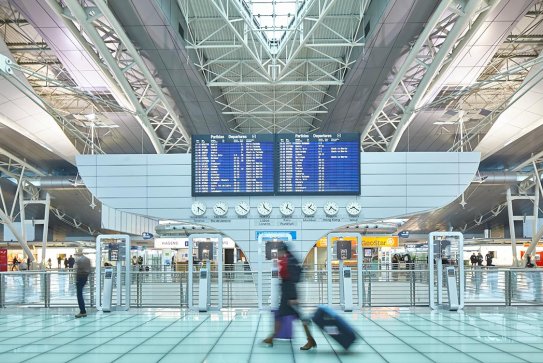
2014
VINCI Energies consolidated its growth internationally
2014
Inauguration of the Louis Vuitton Fondation
2015
VINCI Airports expanded its hub network
2015
Concession companies and constructors at work at Santiago airport in Chile
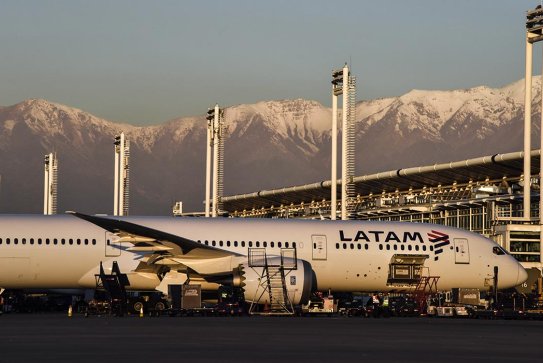
2015
Construction and operation of the Regina Bypass highway in Canada
2016
Development of road infrastructure concessions to an international level
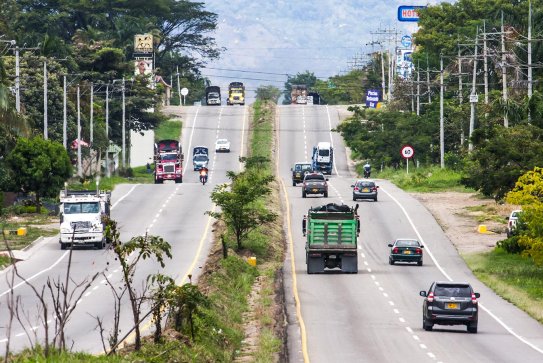
2017
Commissioning of the SEA Tours-Bordeaux LGV
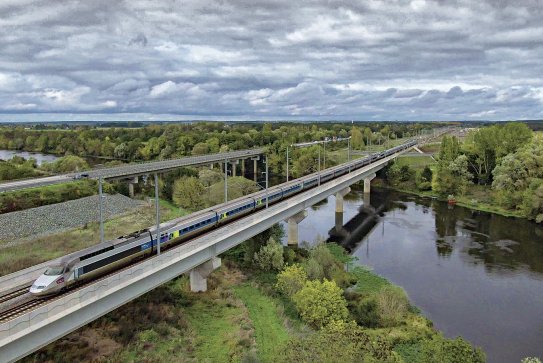
2019
Completion of the containment building at Chernobyl
2019
Opening of the Pont de l’Atlantique to traffic in Panama
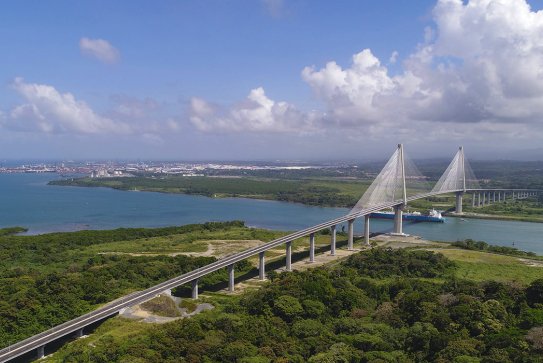
2020
Merging of the VINCI Construction and Eurovia business lines
2021
Construction of electrical infrastructure in Benin
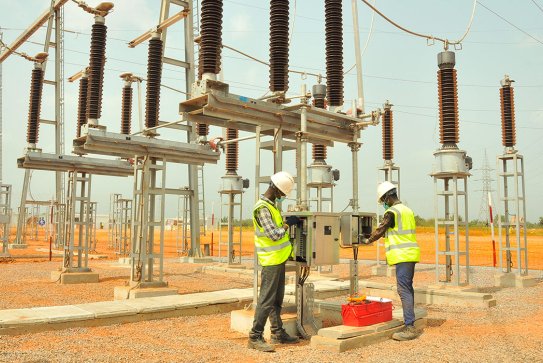
2021
VINCI Construction participated in the work on the Lyon-Turin rail link
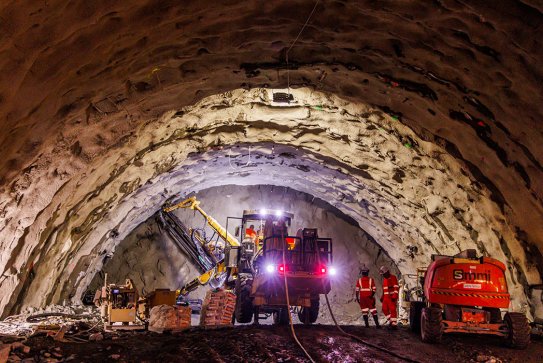
2021
Commissioning of the Strasbourg Western Bypass
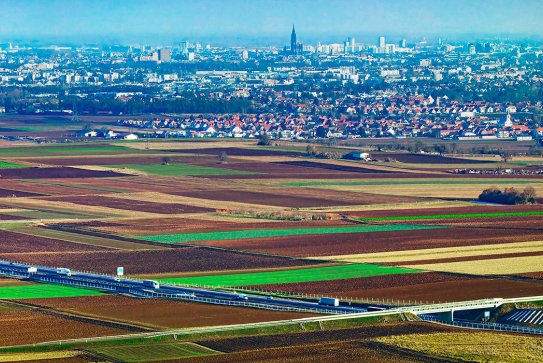
2022
Cobra IS joined VINCI’s Energy division which also includes VINCI Energies.
2025
Pierre Anjolras is appointed Chief Executive Officer of VINCI
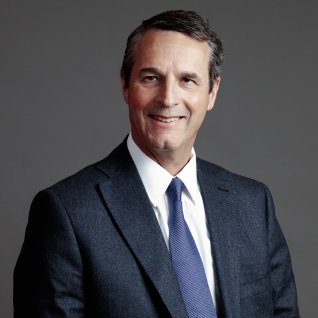
Pierre Anjolras (Chief Executive Officer since April 2025)
Pierre Anjolras was born in 1966, is a graduate of the École polytechnique and a civil engineer. In the past, he worked for the Loire-Atlantique Department of Infrastructure and then for the European Commission’s Directorate-General for External Relations, before joining the VINCI Group in 1999 as the Regional Director of Sogea Sud-Ouest. In 2004, he became the Chief Operating Officer of Cofiroute before being appointed as Chief Executive Officer of ASF in 2007. From May 2010 he was the Deputy Executive Officer of Eurovia in charge of International and Public-Private Partnerships.
Pierre Anjolras has been appointed as Chairman and Chief Executive Officer of Eurovia with effect from 1 March 2014, and becomes a member of VINCI’s Executive Committee. He became Chairman of Eurovia in 2016 and Chairman of VINCI Construction in 2021. On May 2024 he has been appointed Chief Operating Officer of VINCI. On April 2025 he has been appointed Chief Executive Officer of VINCI with effect from 1st May 2025.

